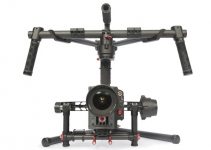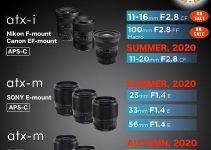The concept of proper exposure may sound simple in theory, but at the same time, it could be pretty challenging to execute in a real-world situation. Newbie filmmakers often have issues finding the proper workflow to expose their cameras correctly not to mention the occasions when they need to deal with a more advanced log-like profile such as Cine4.
Thankfully, seasoned filmmaker and avid Sony user Cody Blue shares some of the best practices to check and adjust exposure, specifically when shooting with Cine4 on your favorite Sony mirrorless camera.
By understanding the exposure and assist tools available out there, you’ll be well on your way to nailing your exposure every time. As a side note, while a lot of the techniques in the video are tailored for shooting with Cine4, many of these tips can be applied to other cameras with different picture profiles as well.
With that in mind, when trying to expose your footage, you need to be sure of what your subject is in the frame, that way you can adjust your settings accordingly. For example, if your main focus in the shot is your talent, your goal will be to expose for him/her, even if it means potentially clipping highlights at certain portions of your image. Conversely, if your main subject is a sunset in the background, then all your exposure settings will be made to properly capture that specific environment.
Meanwhile, there are several tools on your camera that you can use to control the brightness of your images such as ISO, shutter speed and aperture. Using a variable ND filter could be even a better solution as it’ll work flawlessly 99% of the time. Now, you may be wondering how you can actually check to make sure your exposure is correct. One way to do this is by using the Zebra function on your Sony camera, which basically highlights portions of the image that are overexposed.
Cody Blue recommends setting your Zebras to 100+, which will help you detect any apparent signs of overexposing. When you see the zebra stripes over your image, you’ll know to turn down your exposure. However, there may be instances where you can’t fully cater your exposure to the highlights, so you’ll need to use the zebra stripes as a guide, rather than a set-in-stone rule.
Additionally, if you’re in a controlled environment and shooting a human subject, try making a custom Zebra profile at 65 ± 5. With this setting, expose your shot until you see a few zebra stripes on your talent’s skin just as shown in the video above.
An alternative and more accurate way of checking exposure is by using false color. This tool is not typically included in most cameras but is normally found in higher-end external monitors. To expose correctly for a human subject, you’ll want the false color on your talent to fall between 50-75 IRE.
While this may not be the most accessible video assist tool for beginners, it’s arguably one of the best when it comes to checking exposure, granted that you can get your hands on a monitor with the feature available on board.
Despite all the tools and tips outlined above, the number one technique you can use to check proper exposure is by eye. If a shot doesn’t look right to you, don’t hesitate to make changes and adjust your exposure accordingly. At the end of the day, looking through the viewfinder may be all you need to see if you’ve nailed your exposure.
[source: Cody Blue]
Disclaimer: As an Amazon Associate partner and participant in B&H and Adorama Affiliate programmes, we earn a small comission from each purchase made through the affiliate links listed above at no additional cost to you.
Claim your copy of DAVINCI RESOLVE - SIMPLIFIED COURSE. Get Instant Access!





